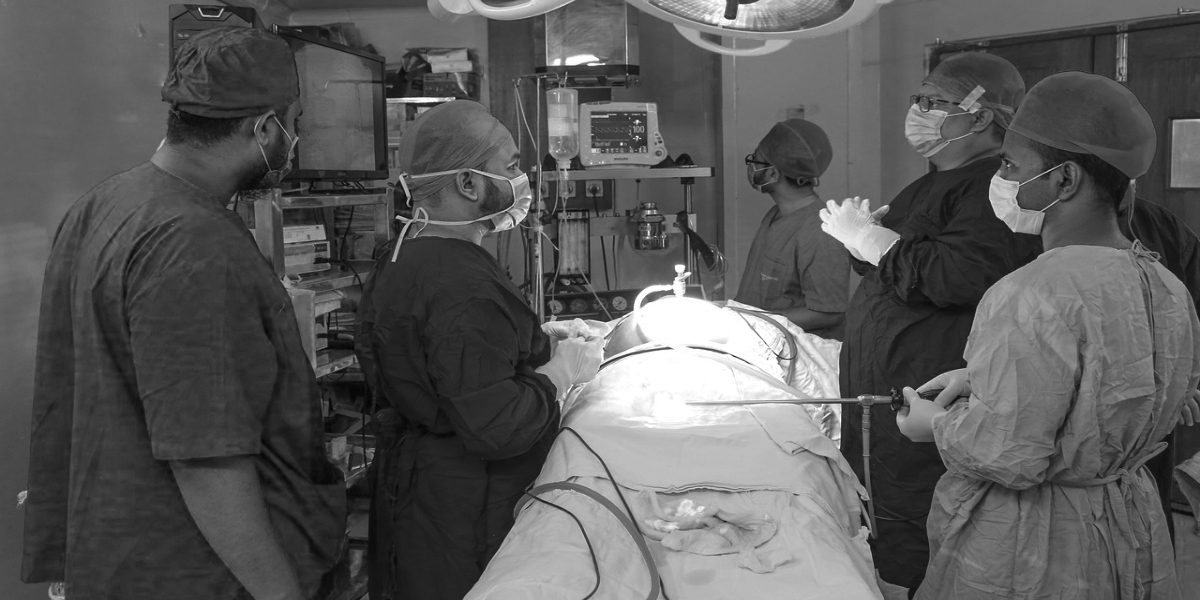As of July 2024, there are 13,86,136 allopathic doctors registered with the State Medical Councils and the National Medical Commission in India.
Published Aug 18, 2024 | 7:00 AM ⚊ Updated Aug 18, 2024 | 9:29 AM

There are frequent discussions on the difficulty of accessing doctors in India; however, the National Medical Council (NMC) has shown that the doctor-patient ratio in the country meets World Health Organisation (WHO) norms, with the Southern states showing particularly strong results. The WHO prescribes a norm of one doctor per 1,000 people.
Recently, in Parliament, Minister of State in the Ministry of Health and Family Welfare, Anupriya Patel, stated that as of July 2024, there are 13,86,136 allopathic doctors registered with the State Medical Councils and the National Medical Commission (NMC).
“Assuming 80% availability of registered allopathic doctors and considering around 5,65,000 AYUSH doctors, the doctor-population ratio in the country is approximately 1:836, which is better than the WHO standard of 1:1000,” Patel said. Travancore
Even if the number of AYUSH doctors is excluded and only modern medicine doctors registered with the NMC are considered, the doctor-patient ratio, based on the total population of 1.38 billion as of 31 March 2023 (according to UIDAI), still stands at 1:1000.
According to data from the National Medical Commission (NMC), Tamil Nadu has the second-highest number of doctors in the country, with 1,49,399 registered with the Tamil Nadu Medical Council (TNMC). The Karnataka Medical Council (KMC) has 1,41,154 registered doctors. The Travancore Medical Council, responsible for registering medical practitioners in Kerala, has 73,069 doctors.
It is noteworthy that the Andhra Pradesh Medical Council has 1,05,805 registered doctors, while the Telangana Medical Council has the lowest registration among southern states, with 26,411 doctors.
“Most doctors practising in Telangana are still registered with the Andhra Pradesh Medical Council. Last year, during a special drive, many Telangana doctors registered with the Telangana Medical Council. This is why the number of registered doctors in the state is currently low,” said an official from the Telangana Medical Council.
Maharashtra has the highest number (2,09,540) of registered medical practitioners while Mizoram Medical Council has the lowest, 156.
In healthcare, the doctor-patient ratio is a crucial indicator of healthcare access, quality of care, and system efficiency. A favourable ratio ensures timely medical attention, reduces waiting times, and enables doctors to provide personalised care, thus improving patient outcomes.
In public health, an optimal ratio is essential during emergencies to manage increased demand effectively.
Southern states also demonstrate a better doctor-patient ratio compared to other parts of the country. Karnataka has one of the highest ratios, with one doctor for every 457 patients (1:457), while Tamil Nadu has a ratio of 1:495. Andhra Pradesh has a ratio of 1:488, and Kerala has a ratio of 1:509.
In contrast, Telangana has a doctor-patient ratio of 1:1,452. According to TGMC officials, most doctors practising in Telangana are registered with the Andhra Pradesh Medical Council (APMC). If the populations and doctor numbers of both states are combined, the former united Andhra Pradesh would have a doctor-patient ratio of 1:681.
Overall, Goa has the highest ratio, with one doctor for every 353 patients, while Maharashtra, with the highest number of doctors, has a ratio of 1:603. Uttar Pradesh, despite having the largest population in the country, has a doctor-patient ratio of 1:2,363.
It should also be noted that there are 731 medical colleges in the country with an annual intake of 1,12,112 MBBS seats as of now.
“Some of the measures taken by the government to expand medical education and improve medical standards in the country include the Centrally Sponsored Scheme (CSS) for establishing new medical colleges by upgrading district/referral hospitals, under which 157 new medical colleges have been approved, with 109 already functional,” Patel said.
The distribution of healthcare professionals in India is highly uneven, with doctors concentrated in urban centres. This disparity leads to significant gaps in access to healthcare services, particularly in underserved areas where many primary health centres (PHCs) remain under-resourced and understaffed.
The quality of healthcare services also varies widely. Despite the number of doctors, there is a notable shortage of specialists, especially in rural areas. Approximately 70 percent of specialist positions in community health centres are vacant.
According to the Rural Health Statistics Report 2021-22, India is still grappling with a severe shortage of specialist doctors at Community Health Centers (CHCs).
A large portion of the necessary specialists — surgeons, obstetricians, gynaecologists, physicians, and paediatricians — are not available in many rural centres. Although the number of specialist doctors has risen over the years, it has not kept up with the increasing demand, resulting in a significant gap in healthcare access.
Additionally, many healthcare facilities lack the necessary infrastructure and equipment to provide comprehensive care. This includes inadequate diagnostic facilities, insufficient hospital beds, and a shortage of essential medical supplies.
Poor management practices and corruption within the healthcare system contribute to inefficiencies and the misallocation of resources. Allegations of fraud in health programs have been reported, further eroding public trust and hindering effective healthcare delivery.
Many doctors prefer to practise in urban settings due to better career opportunities, lifestyle amenities, and higher salaries, besides the availability of the necessary infrastructure to work effectively. This trend exacerbates the shortage of healthcare providers in rural areas.
Once doctors are placed in rural areas, retaining them becomes a challenge. Factors such as limited professional growth opportunities, inadequate living conditions, and lack of support systems contribute to high turnover rates among healthcare professionals in these regions.
Rural areas often face socioeconomic challenges, including poverty and lower educational levels, which can hinder the recruitment and retention of qualified healthcare professionals. These factors also affect the health-seeking behaviour of the population, further complicating healthcare delivery.
(Edited by Rosamma Thomas).
(South First is now on WhatsApp and Telegram)
